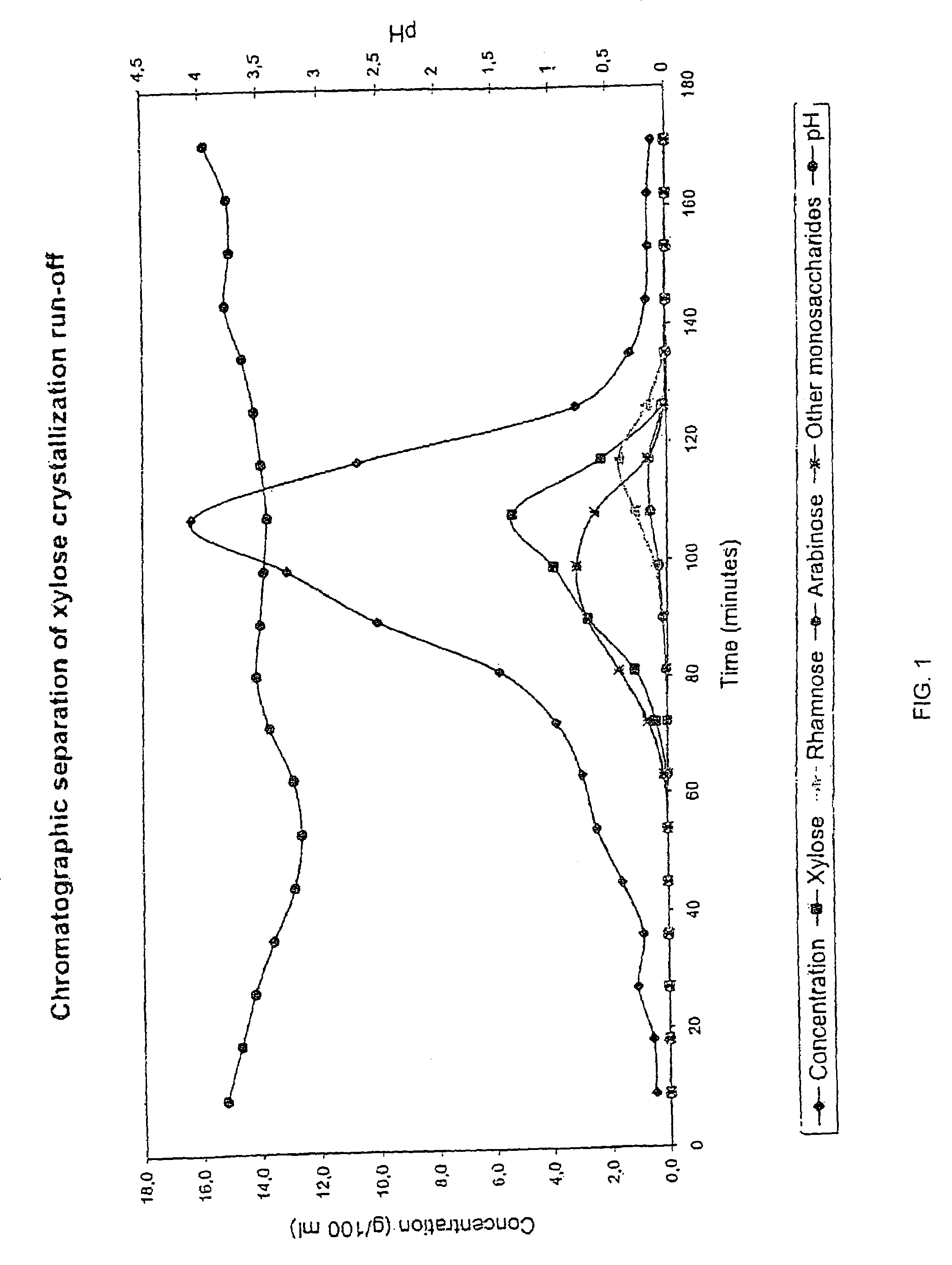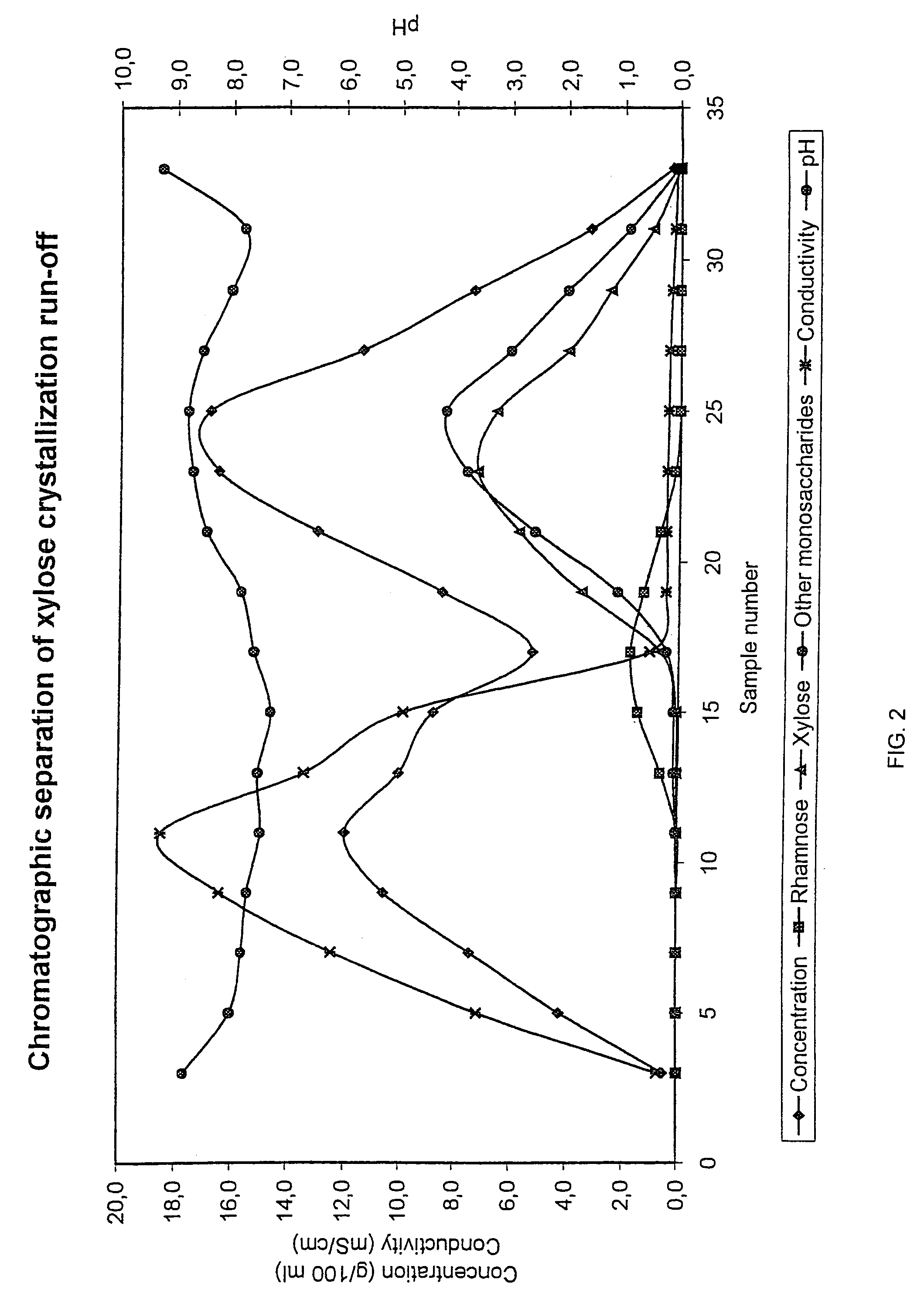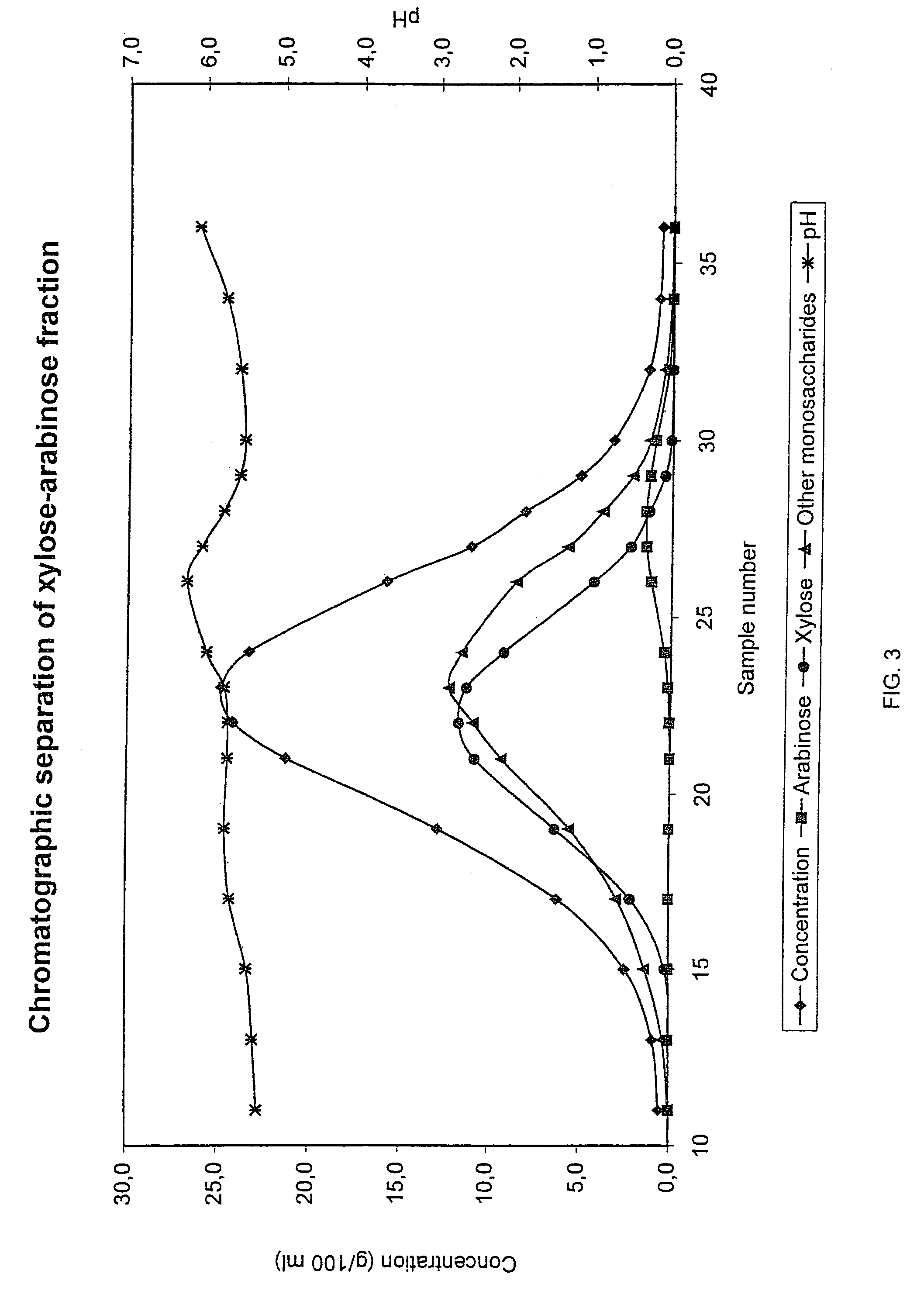Method for recovering products
a product and product technology, applied in the field of product recovery, can solve the problems of difficult separation of certain monosaccharides by using strongly acidic cation exchange resins, and the method has not been used for separating sugars
- Summary
- Abstract
- Description
- Claims
- Application Information
AI Technical Summary
Problems solved by technology
Method used
Image
Examples
example 1
Chromatographic Separation of Xylose Crystallization Run-off with a H+ / Mg2+-form Resin
[0042]Xylose crystallization run-off which was beech wood based Mg-base si-cooking liquor was subjected to a chromatographic separation. The separation was performed in a laboratory chromatographic separation column as a batch process. The column with a diameter of 0.045 m was filled with an acrylic weakly acid cation exchange resin (Finex CA 12 GC™) manufactured by Finex Oy, Finland. The resin was an ethyl acrylate-based resin. The height of the resin bed was about 0.70 m. The cross-linkage degree of the resin was 6% by weight DVB and the average particle size of the resin was 0.26 mm. The resin was regenerated into mainly H+-form (94% by equivalent) and partly Mg2+-form (6% by equivalent) and a feeding device was placed at the top of the resin bed. The temperature of the column and feed solution and eluant water was approximately 65° C. The flow rate in the column was adjusted to 4 ml / min.
[0043]T...
example 2
Purification of L-Rhamnose by Chromatograhic Separation
[0053]Xylose precipitation crystallization (the final run-off) mother liquor from birch wood based si-cooking was used as a starting material and was thus subjected to a chromatographic separation in a batch separation column.
[0054]The separation was performed in a pilot chromatographic separation column as a batch process. The whole equipment consisted of a feed tank, a feed pump, a heat exchanger, a chromatographic separation column, product containers, pipelines for input of feed solution as well as eluant water, pipelines for output and flow controlling equipments.
[0055]The column with a diameter of 0.225 m was filled with an acrylic weakly acid cation exchange resin (manufactured by Finex Ltd., Finland); the height of the resin bed was about 5.2 m. The degree of cross-linkage was 3% by weight DVB and the average particle size was 0.34 mm. The resin was regenerated into sodium (Na+) form and a feeding device was then placed ...
example 3
Chromatographic Separation of Xylose-Arabinose Fraction from Rhamnose Separation
[0068]Arabinose containing xylose fraction, prepared as in Example 2, from rhamnose separation was subjected to a chromatographic separation. The separation was performed in a pilot chromatographic separation column as a batch process. The column with a diameter of 0.225 m was filled with a strong acid cation exchange resin (Finex CS 13 GC™, manufactured by Finex Oy, Finland). The height of the resin bed was 5.0 m. The cross-linkage degree of the resin was 5.5% by weight DVB and the average particle size about 0.4 mm. The resin was in Ca2+-form. A feeding device was placed at the top of the resin bed. The temperature of the column, feed solution and eluant water was approximately 65° C. The flow rate in the column was adjusted to 30 l / h. A check filtration (through a filter bag) was made prior the separation.
[0069]The chromatographic separation was carried out as follows:
[0070]Step 1:
[0071]The dry substa...
PUM
| Property | Measurement | Unit |
|---|---|---|
| Temperature | aaaaa | aaaaa |
| Temperature | aaaaa | aaaaa |
| Temperature | aaaaa | aaaaa |
Abstract
Description
Claims
Application Information
 Login to View More
Login to View More - R&D
- Intellectual Property
- Life Sciences
- Materials
- Tech Scout
- Unparalleled Data Quality
- Higher Quality Content
- 60% Fewer Hallucinations
Browse by: Latest US Patents, China's latest patents, Technical Efficacy Thesaurus, Application Domain, Technology Topic, Popular Technical Reports.
© 2025 PatSnap. All rights reserved.Legal|Privacy policy|Modern Slavery Act Transparency Statement|Sitemap|About US| Contact US: help@patsnap.com



